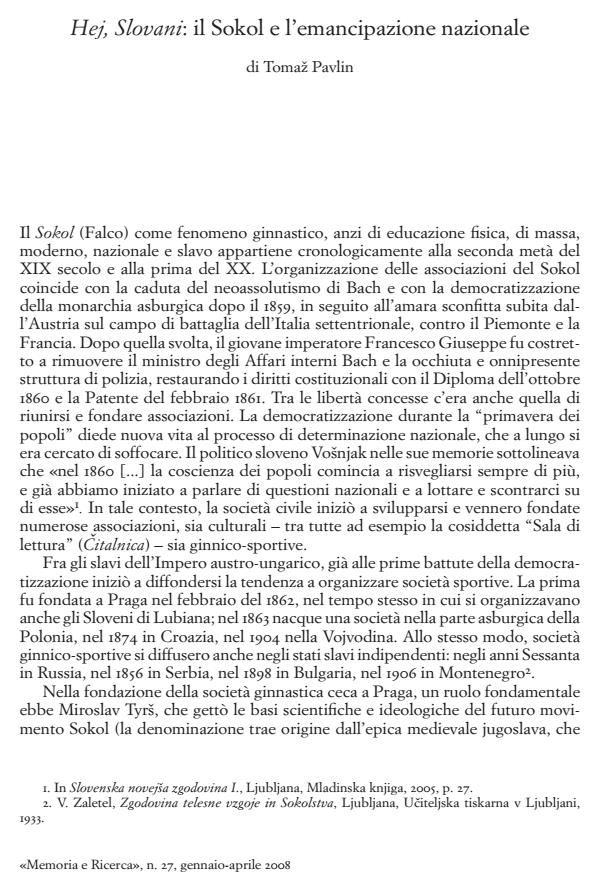Hej, Slovani: il Sokol e l’emancipazione nazionale
Titolo Rivista MEMORIA E RICERCA
Autori/Curatori Tomaz Pavlin
Anno di pubblicazione 2008 Fascicolo 2008/27 Lingua Italiano
Numero pagine 17 P. 31-47 Dimensione file 1700 KB
DOI
Il DOI è il codice a barre della proprietà intellettuale: per saperne di più
clicca qui
Qui sotto puoi vedere in anteprima la prima pagina di questo articolo.
Se questo articolo ti interessa, lo puoi acquistare (e scaricare in formato pdf) seguendo le facili indicazioni per acquistare il download credit. Acquista Download Credits per scaricare questo Articolo in formato PDF

FrancoAngeli è membro della Publishers International Linking Association, Inc (PILA)associazione indipendente e non profit per facilitare (attraverso i servizi tecnologici implementati da CrossRef.org) l’accesso degli studiosi ai contenuti digitali nelle pubblicazioni professionali e scientifiche
Hej Slovani, Sokol and national emancipation ABSTRACT: Sokol as a modern, national, mass, gymnastic or physical educational and slavic organisation dated in the second half of 19th and first half of 20th century. First Sokol society was organised by Czhecs in Prague in february 1862. Paralelly run initiative among Slovenes in Ljubljana, where was similar socitey organised in october 1863, autonomously of Czhecs. In the paper we follow the organisation and Sokol’s interlacing in the slovene national struggle for emancipation in the Habsburg Empire. After the I WW Sokol organisations of South Slavs joint together in the Jugoslav Sokol and the strugle for emancipation was substituted with suport and patriotism for jugoslav state and jugoslav national idea. Sokol’s tension was to become leading national and physical educationer and it was suported by King and liberal politic bloc. In the political tension in 30th years Sokol followed its national and slavic orientation despite of changes in inner and foreign policy in Kingdom of Yugoslavia.;
Tomaz Pavlin, Hej, Slovani: il Sokol e l’emancipazione nazionale in "MEMORIA E RICERCA " 27/2008, pp 31-47, DOI: